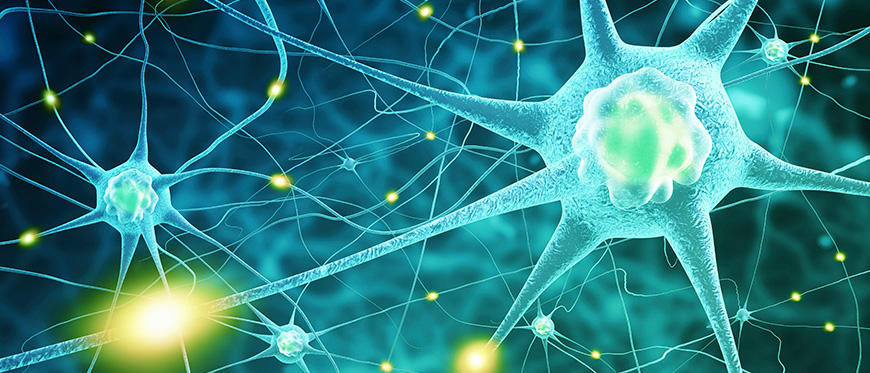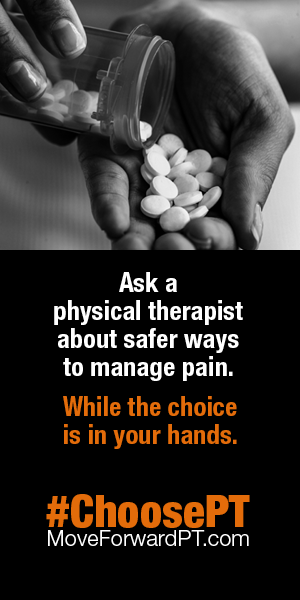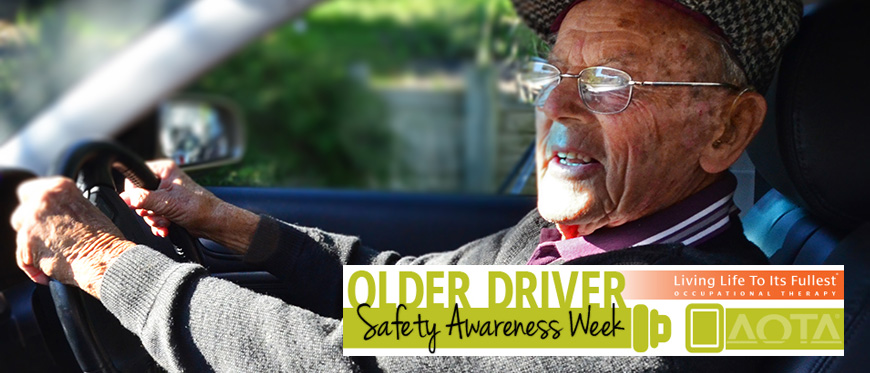The National Institutes of Health reports that 1 in 10 American adults experience chronic pain and more than 126 million Americans – more than half of all U.S. adults – reported pain in the last three months.
As a physical therapist, these numbers are not just statistics to me, but represent the patients we treat every day. I have a doctorate in physical therapy and a trove of manual techniques and therapies for treating patients, but there is intriguing new research about how the brain perceives pain that is beginning to change the way we approach patient care.
Explain Pain Model of Patient Care
#ChoosePT is a national campaign to raise awareness about the dangers of prescription opioids and encourage consumers and prescribers to choose safer alternatives like physical therapy.
The title of this article is one of the key ideas of the Explain Pain model of patient care. Explain Pain is an education-based intervention that aims to change the patient’s understanding of the biological processes that create a pain response.
Pain is an output of the brain, not an input from the body. Research done over the last 20 years has demonstrated that in order for there to be positive change for a person with chronic pain, he/she needs to understand:
- What pain is and the science behind why they feel it;
- How to increase the flow of blood and oxygen getting to the painful area;
- What ways the brain reduces pain (stocking your brain’s natural medicine cabinet).
The major objective of Explain Pain is to shift the brain’s perception of pain from being a signal of injury to its perceived need to protect the body.
The existence or absence of pain is not always a reliable indicator of what is going on.
- Tissue damage does not always equal pain. What this means is that just because you are hurt does not mean you will feel pain.
- Many studies have demonstrated that large percentages of pain-free participants have what would be considered significant tissue damage when viewed with X-rays, MRIs or CT scans (such as rotator cuff tears, disc herniations and osteoarthritis), but they are pain free.
- Extreme examples of this are when a soldier is injured on the battlefield and continues with his duties or a surfer is attacked by a shark and swims to shore without experiencing shock until in emergency care.
- Pain does not always signal tissue damage. What this means is that just because you are in pain does not necessarily mean you are hurt.
- Many people suffer chronic pain with no tissue damage. Chronic back, pelvic, knee or shoulder pain, fibromyalgia and other chronic pain conditions all fall into this category. This group is dealing more with a sensitized nervous system.
Let us say you stepped on a nail while walking. Under normal circumstances this would hurt, but if you stepped on that same nail while running from a hungry lion, you would not notice the nail. The threat of the lion outweighs the threat of the nail to your survival.
- This is essentially what the pain response boils down to -- it is the brain’s need to respond to a real or perceived threat.
- The brain evaluates all threats using every tool it has, including your stress, past experiences, understanding of the situation you are in and tissue injury. In some cases it may decide to protect you by producing pain, but not in others.
For More Information
At CVMC, we have rehabilitation therapists who are trained to assist patients in the reconceptualization of pain and teach them core pain management skills through the latest neuroscientific education. Learn more.
To learn more about pain science, take a look at these videos:
- Brainman Videos - Explain Pain in 5 Minutes: https://www.youtube.com/watch?v=5KrUL8tOaQs&list=UUAfjSufXOnORMLMtSid6CQQ&index=17
- Lorimer Moseley TEDx Talk “Why Things Hurt”:
https://www.youtube.com/watch?v=gwd-wLdIHjs
References:
Estimates of Pain Prevalence and Severity in Adults: U.S. 2012. (Nahin RL/Journal of Pain 2015/NHIS/NCCIH/NIH)






